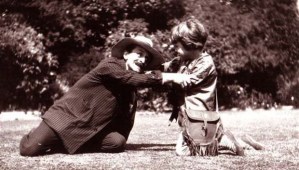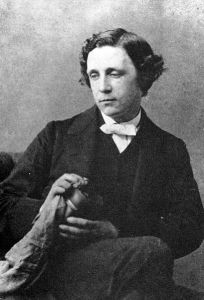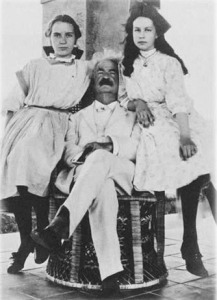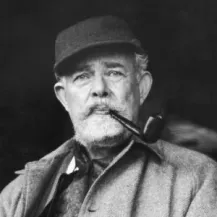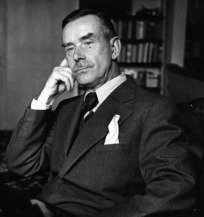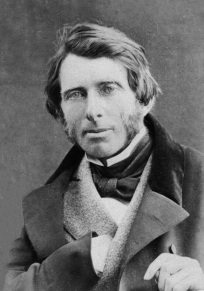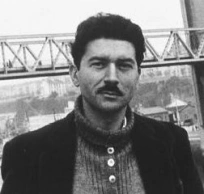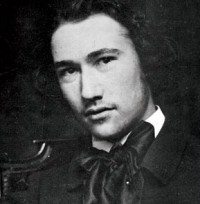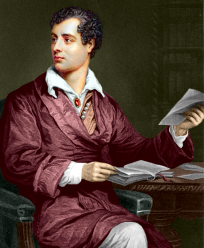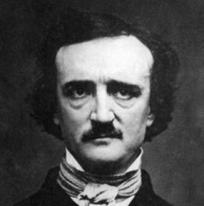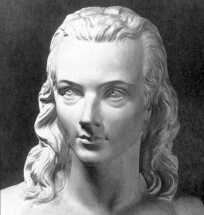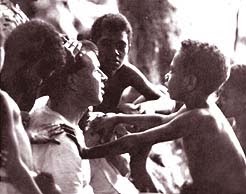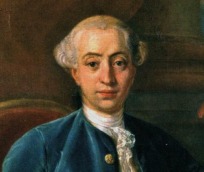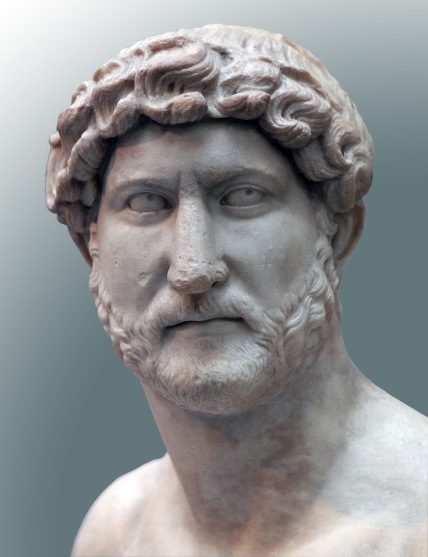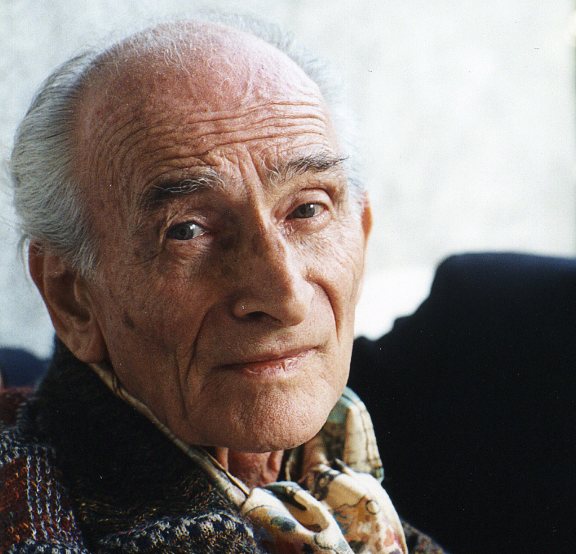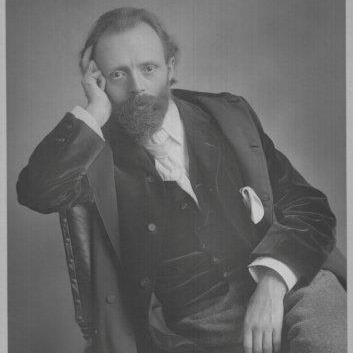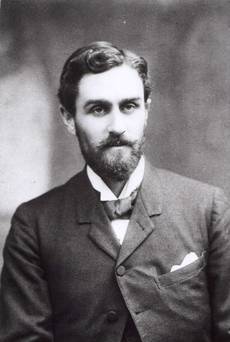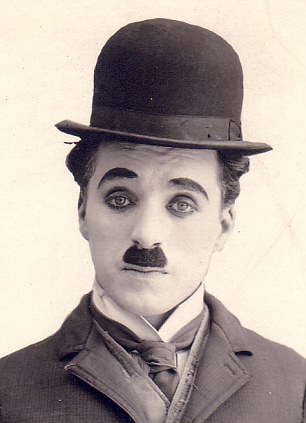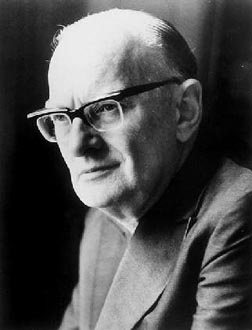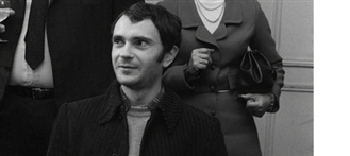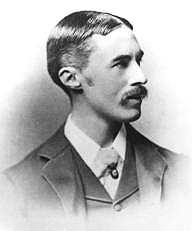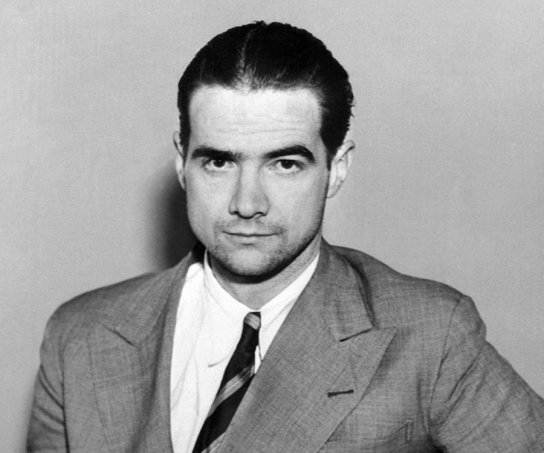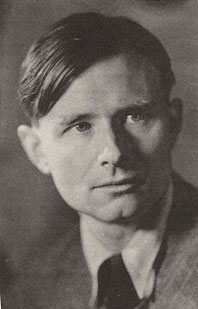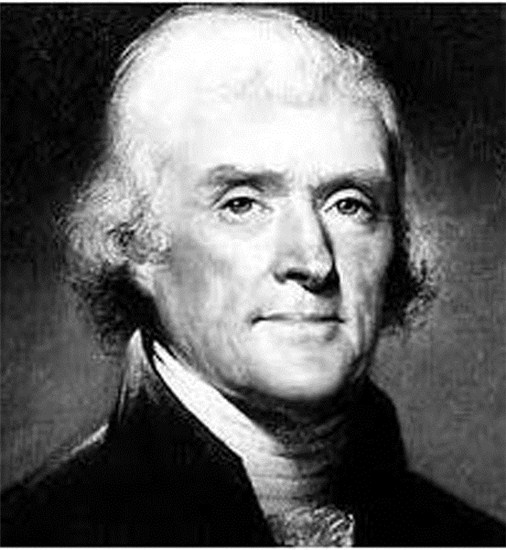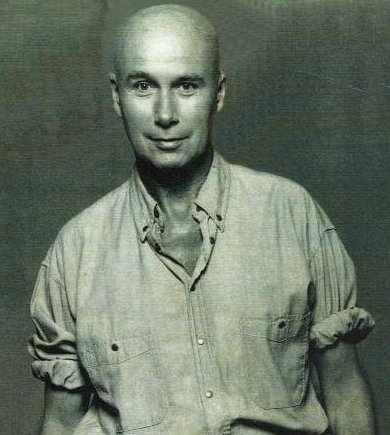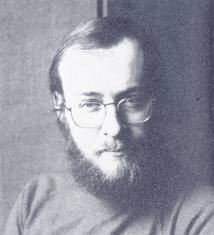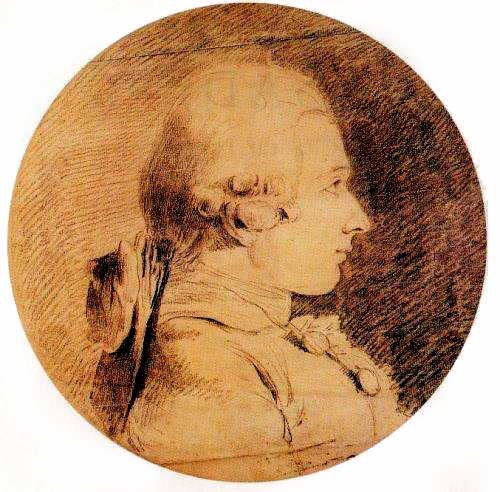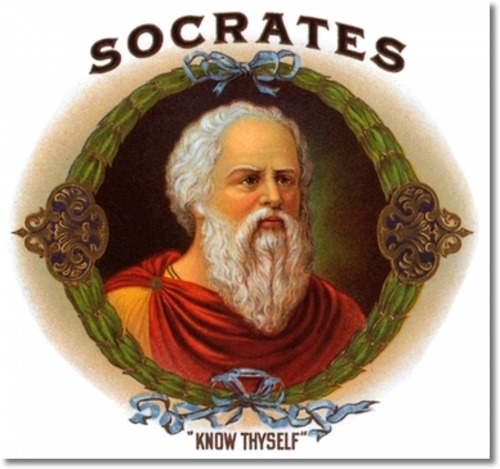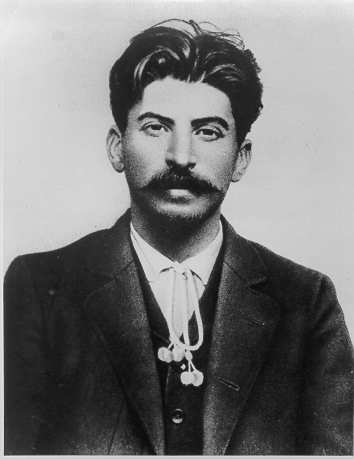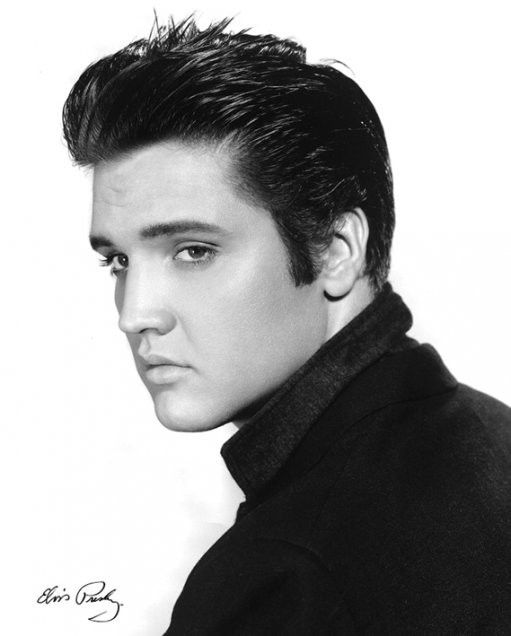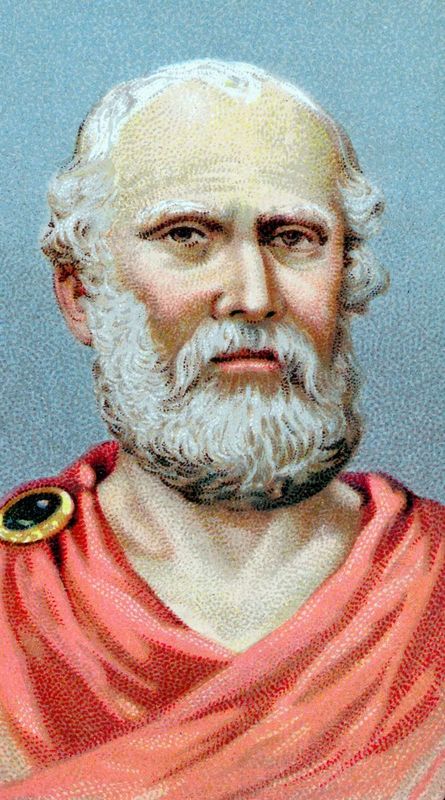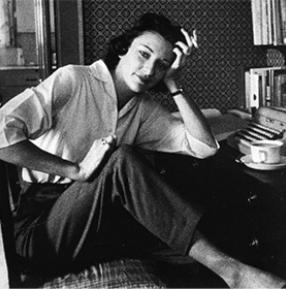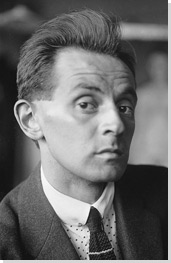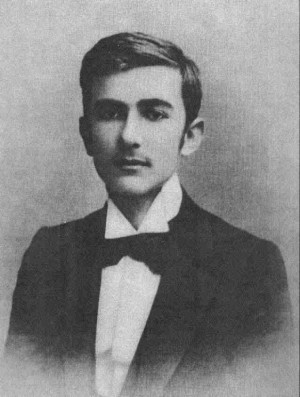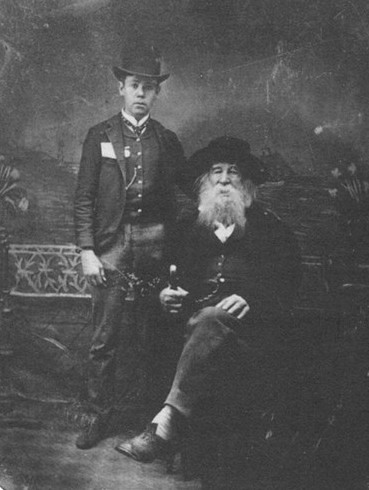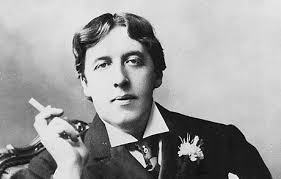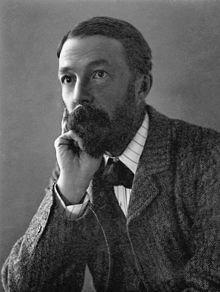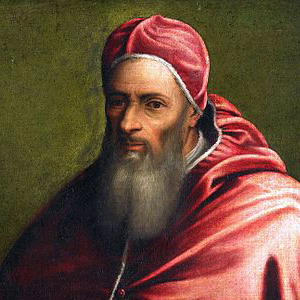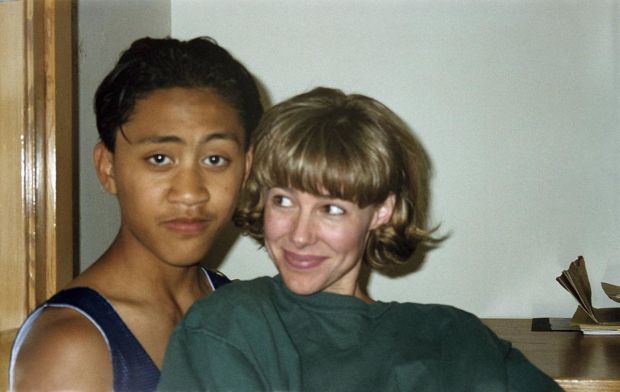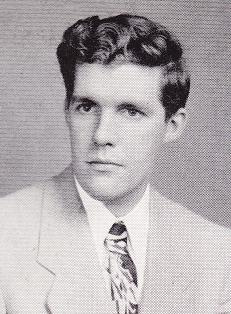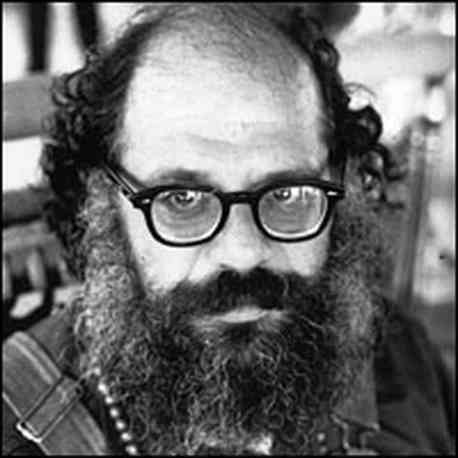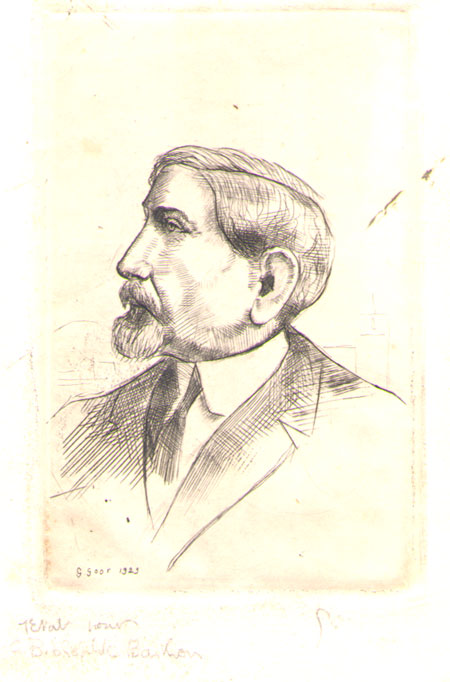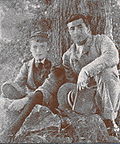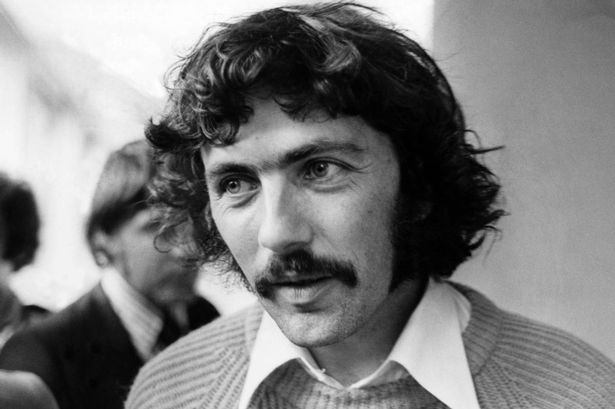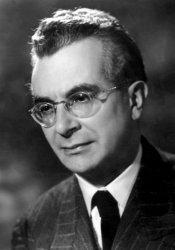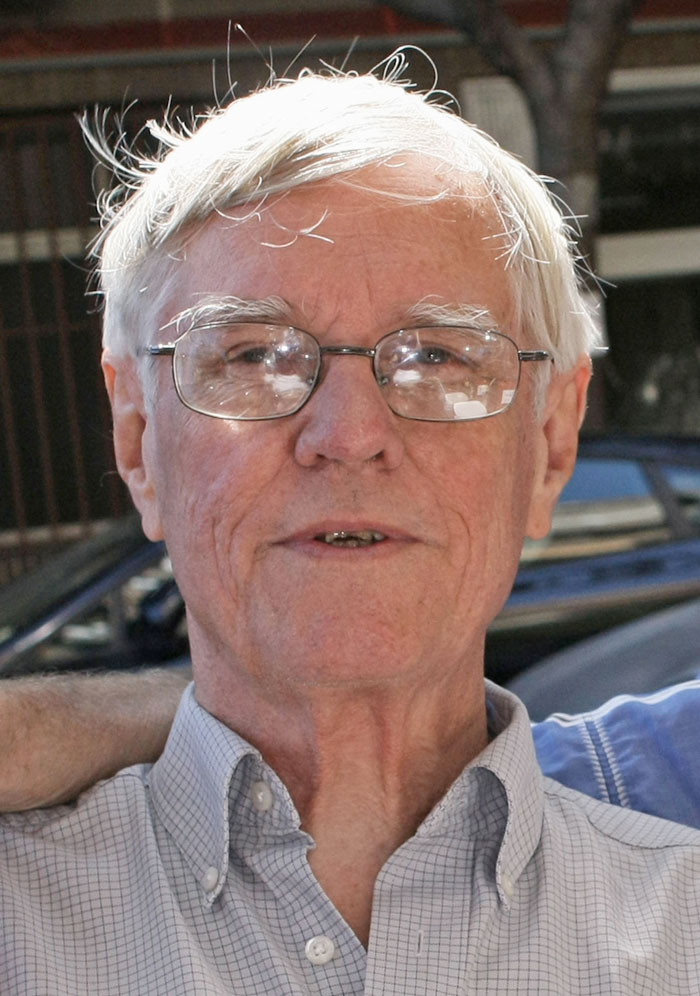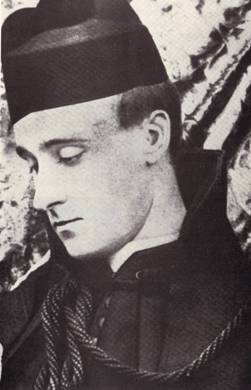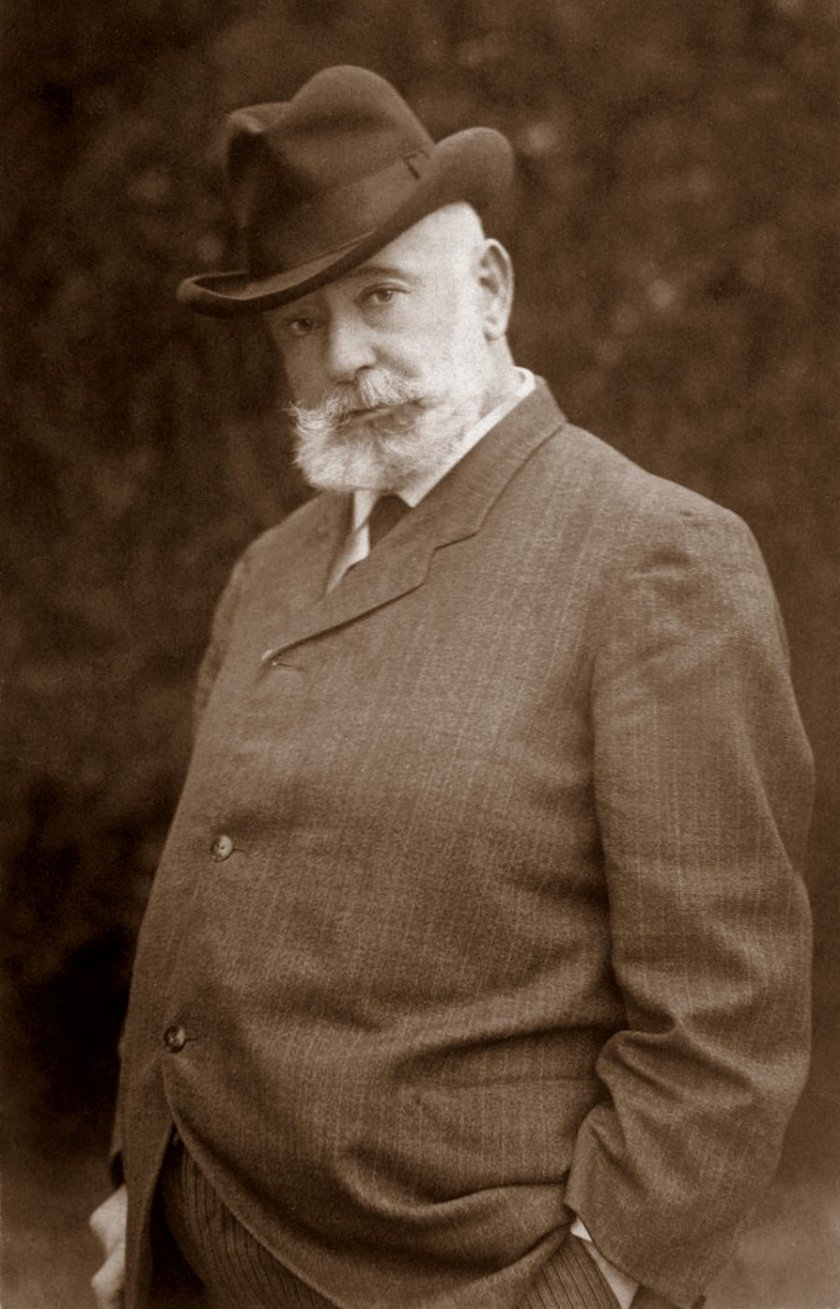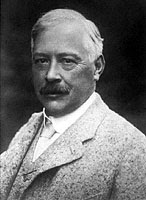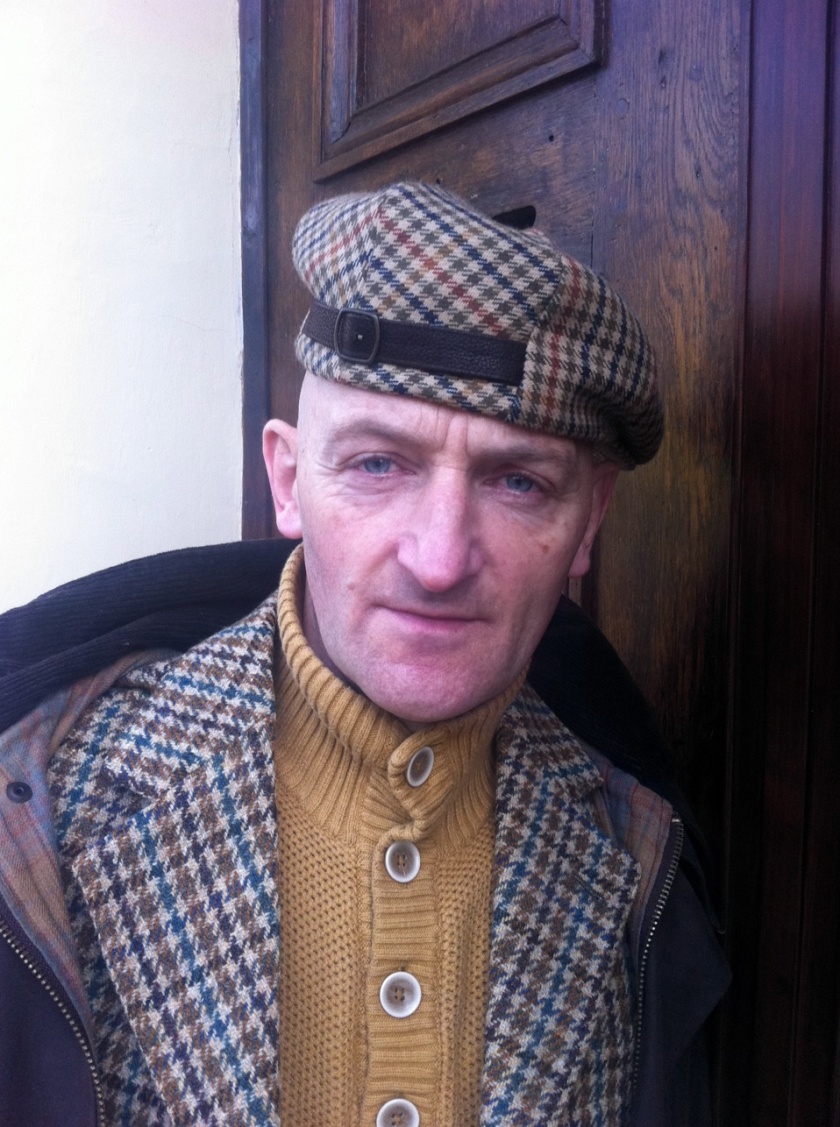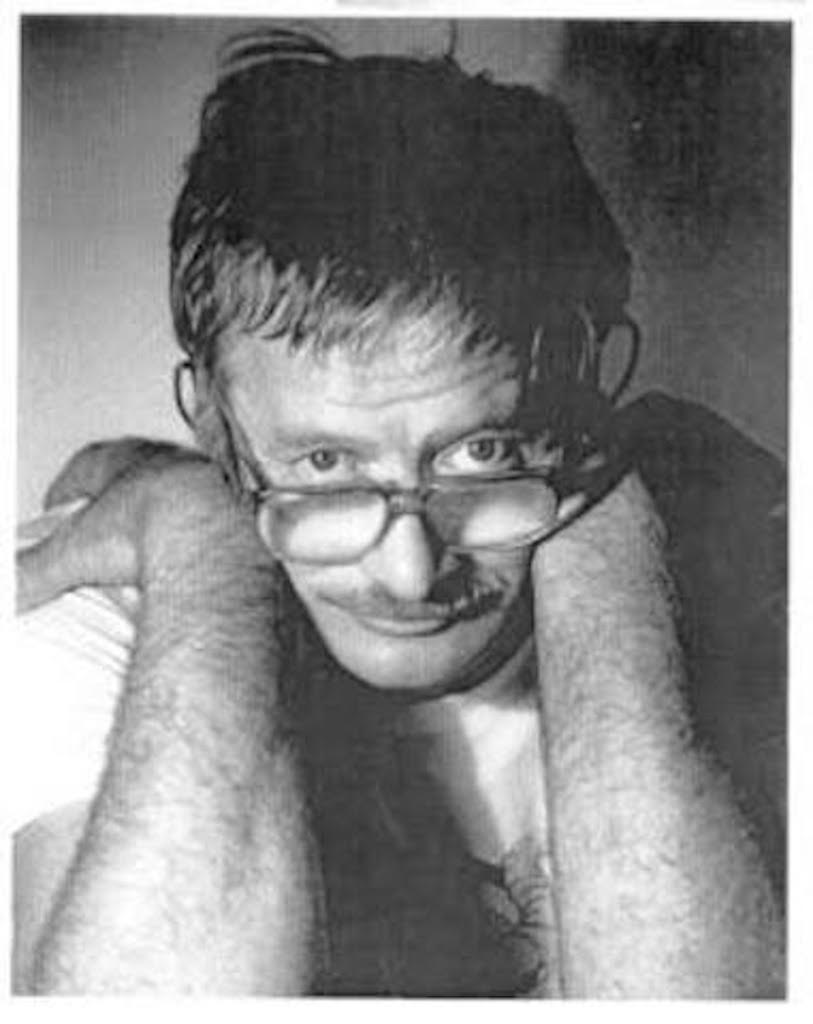The entire post below is copied (with permission) from https://philiaresearch.wordpress.com. I would like to thank the author for their excellent work.
Table of Contents
- Augustine
- J. M. Barrie
- Benjamin Britten
- Lewis Carroll
- Thomas Mann
- Gabriel García Márquez
- Kentaro Miura
- Hayao Miyazaki?
- Alain Robbe-Grillet
- John Ruskin
- Mark Twain
- T. H. White
- Horatio Alger
- Lord Byron
- Giacomo Casanova
- Samuel de Champlain
- Will Durant
- Daniel Carleton Gajdusek
- Mahatma Gandhi
- André Gide
- Johann Wolfgang von Goethe?
- John, King of England
- Muhammad
- Novalis
- Edgar Allan Poe
- Srinivasa Ramanujan
- M. P. Shiel
- Rabindranath Tagore
Celibate
These figures were celibate with respect to minors.
J. M. Barrie, author (1860 – 1937)
Barrie’s love of young boys, which inspired him to create the timeless Peter Pan, is documented in the biography by Birkin (1979) (republished as Birkin & Goode, 2003).In 1894, Barrie married Mary Ansell, but their relationship soured because he showed little interest in sex. He met the young sons of the Llewelyn-Davies family in 1897, and was soon spending much of his time playing with them. An associate, Dolly Ponsonby, wrote that the boys “fill his life & supply all his human interest” (Birkin & Goode, 2003, p. 168), and he became passionately attached to two of them, George and the openly homosexual Michael. He took many photographs of the boys, some of them nude, but never made any sexual passes, according to the boys themselves. Barrie modeled the characters in The Little White Bird after himself and George; one suggestive passage about a sleepover reads (Barrie, 1902, chapter 19):
“Why, David,” said I, sitting up, “do you want to come into my bed?”
“Mother said I wasn’t to want it unless you wanted it first,” he squeaked.
“It is what I have been wanting the whole time”, said I, and then without more ado the little white figure rose and flung itself at me. For the rest of the night he lay on me and across me, and sometimes his feet were at the bottom of the bed and sometimes on the pillow, but he always retained possession of my finger, and occasionally he woke me to say that he was sleeping with me. I had not a good night. I lay thinking.
Barrie wrote the following to Michael on the eve of his eighth birthday (Birkin & Goode, 2003, p. 166):
My dear Michael,
Paris is looking very excited today, and all the people think it is because there were races yesterday, but I know it is because tomorrow is your birthday. I wish I could be with you and your candles. You can look on me as one of your candles, the one that burns badly — the greasy one that is bent in the middle. But still, hurray, I am Michael’s candle. I wish I could see you putting on the redskin’s clothes for the first time. Won’t your mother be frightened. Nick will hide beneath the bed, and Peter will cry for the police.
Dear Micheal, I am very fond of you, but don’t tell anybody.
Lewis Carroll, author (1832 – 1898)
Pen name of Charles Dodgson, author of Alice in Wonderland, mathematician, and photographer. Carroll devised Wonderland to entertain Alice (10), Lorina (13) and Edith (8) Liddell on a boating trip, wrote it down at Alice’s request, and presented the first manuscript to her less than two years later. Carroll’s attraction to young girls is established in a number of biographies, especially Cohen (1996).Carroll had hundreds of little girl friends throughout his life — he once remarked “children are three-fourths of my life.” Among them, Alice was the most important. In his diary, Carroll marked “special day[s] which had given him great pleasure” with a metaphorical white stone. Carroll marked all but one of the days he met Alice with a white stone (Dick, 1954):
Referring to Carroll’s diary entry on first meeting Alice, ‘I mark this day with a white stone,’ Mr. Hudson states this was reserved ‘for outstanding occasions,’ which is certainly true, because the diaries show that this curious entry commemorated all the days when Carroll saw Alice, with the one exception of Carroll’s first meeting with Ellen Terry. Carroll’s white-stone days were Alice days—none of his seaside frolics with the Dollies, Aggies and Bessies, tantalising as they were, merited any thanksgiving offering.
In 1863, when Alice was eleven, something occurred that caused a rift between Carroll and the Liddell family. Several pages in his diary, likely detailing these events, were cut out. Carroll would later be informed by Ms. Liddell that he was no longer allowed to take her daughters rowing, and Ms. Liddell destroyed all of his letters to Alice. Cohen argues that the rift was caused by a failed marriage proposal to Alice (Cohen, 1996, p. 101):
The fact that Alice is Charles’ “ideal child friend”, that she sparked his creative energy, that he devoted so much of his time to her and fashioned his two remarkable fantasies with her as heroine is proof enough of a deep attachment, certain affection, even a kind of love. That he might desire a holy union with her is understandable.
Two contemporaries of Carroll are quoted to support this. The first is Margaret Woods, who claimed that “when the Alice of his tale had grown into a lovely girl, he asked, in old-world fashion, her father’s permission to pay his addresses to her.” The second is Lord Salisbury, an “archenemy of gossip” who Cohen considers particularly reliable; he reported “they say that Dodgson has half gone out of his mind in consequence of having been refused by the real Alice (Liddell). It looks like it.” (Cohen, 1996, p. 100-101) Cohen also points to an 1866 diary entry:
On Saturday Uncle Skeffington dined with me, and on Sunday I dined with him at the Randolph, and on each occasion we had a good deal of conversation about Wilfred, and about A. L. — it is a very anxious subject.
At the time, Carroll’s brother Wilfred had fallen in love with 14-year-old Alice Jane Donkin. Cohen believes that Carroll is here comparing the experience of Wilfred to his own with A. L. — Alice Liddell (Cohen, 1996, p. 101).
Lorina Liddell commented on the rift in a 1930 letter to Alice, after being interviewed by a biographer:
I suppose you don’t remember when Mr. Dodgson ceased coming to the Deanery? How old were you? I said his manner became too affectionate to you as you grew older and that mother spoke to him about it, and that offended him so he ceased coming to visit us again, as one had to give some reason for all intercourse ceasing. I don’t think you could have been more than 9 or 10 on account of my age! I must put it a bit differently for Mrs. B’s book. I had no idea my words were to be taken down! Mr. Dodgson used to take you on his knee. I know I did not say that! Horrible being interviewed if your words are taken down.
Lastly, when Carroll asked to meet the youngest daughters of Mrs. Liddell in 1891, he made this telling comment (Cohen, 1996, p. 101): “I am close on 60 years now, and all romantic sentiment has quite died out of my life: so I have become quite hardened to having lady-visitors of any age!” That suggests, of course, that Mrs. Liddell had reason to worry about his romantic sentiments.
Carroll’s diaries record that he was tormented by unwanted thoughts. He wrote his book of puzzles Pillow Problems to distract the reader from “unholy thoughts, which torture, with their hateful presence, the fancy that would fain be pure.” Cohen argues that these unwanted thoughts were about children because the feverish appeals to God for help in his diaries cluster around his visits with the Liddells (Cohen, 1996, p. 207-210).
Carroll’s Through the Looking-Glass, published in 1871, begins with an acrostic that spells out Alice Liddell’s name. His longing for her is evident: “Still she haunts me, phantomwise, / Alice moving under skies / Never seen by waking eyes.”
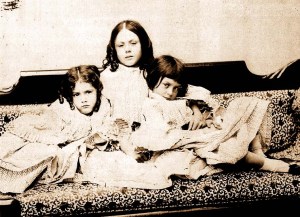 Carroll was a prolific photographer of children, some of them nude. Carroll instructed that all of his nude photography be destroyed at his death. Only a few pictures survive, the most erotic being prepubescent Evelyn Hatch’s 29 July 1879 photo. (In 2015, it was reported that a full frontal nude of Alice’s pubescent sister was discovered.) Mavor (1996) explores the “obvious sexuality” of Carroll’s photographs from a feminist perspective. Carroll put considerable effort into convincing parents to allow nude photography of their daughters, but always ensured that all involved were comfortable with nudity; one of his letters reads (Cohen, 1979, p. 253-254):
Carroll was a prolific photographer of children, some of them nude. Carroll instructed that all of his nude photography be destroyed at his death. Only a few pictures survive, the most erotic being prepubescent Evelyn Hatch’s 29 July 1879 photo. (In 2015, it was reported that a full frontal nude of Alice’s pubescent sister was discovered.) Mavor (1996) explores the “obvious sexuality” of Carroll’s photographs from a feminist perspective. Carroll put considerable effort into convincing parents to allow nude photography of their daughters, but always ensured that all involved were comfortable with nudity; one of his letters reads (Cohen, 1979, p. 253-254):
If you should decide on sending over Gertrude and not coming yourself, would you kindly let me know what is the minimum amount of dress in which you are willing to have her taken? With that information, will then be guided by her likings in the matter: children differ very much — with some that I know (Londoners chiefly) I would not venture to propose even taking off their shoes: but with a child like your Gertrude, as simple-minded as Eve in the garden of Eden, I should see no objection (provided she liked it herself) to photographing her in Eve’s original dress. And I think, if you were here and could see the photographs I have done of children in that primitive costume, that you would agree that it is quite possible to make such a picture that you might frame it and hang it up in your drawing-room.
But, much as I should myself like to have such a picture of her, if you at all object, or if she has changed her mind since I saw her (she was quite willing to be taken so, last September), of course I give it up, though I do not, once in a hundred cases, get so well-formed a subject for art.
Some scholars have attempted to deny Carroll’s pedophilia on the specious grounds that:
(a) “Carroll had some attraction to adult women.” Exclusive attraction to children is rare among pedophiles; his passion was still for little girls, and he met his most important adult friends when they were children. And,
(b) “nude photography and appreciation of girls was common in Victoria England.” The problem with this argument is that Victorian culture eroticized child innocence (Kincaid, 1994). Some of the most prominent figures in the Victorian “cult of the child”, like Ruskin and Dowson, did not even hide the romantic nature of their love. Why should we assume that Carroll’s love was chaste just because some contemporaries were equally blatant in their adulation of small girls? All it proves is that pedophiles of the era were free to express themselves through artistic sublimation, if not more: For most of Carroll’s lifetime, the age-of-consent was 12 or 13, a context in which “the pre-pubescent body of the 12-year-old girl was an entirely legitimate object of male sexual desire” (MacLeod, 2008, p. 360). Finally, even during Carroll’s life, rumors circulated about his photography and some parents were suspicious of his requests for nudity (Cohen, 1979, p. 337-343).
Mark Twain, author (1835 – 1910)
Mark Twain was the pen name of Samuel Clemens, known for his Tom Sawyer and Huckleberry Finn novels. When he was 22, Twain met a 13- or 14-year-old girl named Laura Wright whom he declared an “instantly elected sweetheart”. Their fleeting encounter had a profound impact on him, and he dreamt of her throughout his life (Powers, 2010). At the age of 72, Twain began collecting little girl friends in his “Aquarium Club”. Correspondence and meetings with members of the club, girls aged 10 to 16, became his chief joy in life (Cooley, 2009). There is evidence of impropriety with one of the girls, who was 15 at the time.Hill (2010), p. 195, on the Aquarium Club:
Perhaps also somehow associated with his increasing age was his constant and almost compulsive interest in little girls. On his first trip to Bermuda in 1908 he made a close friend of Margaret Blackmer; on the second, he discovered Irene Gerken. As Miss Lyon described him, “his first interest when he goes to a new place is to find little girls” and “off he goes with a flash when he sees a new pair of slim little legs appear; and if the little girl wears butterfly bows of ribbon on the back of her head then his delirium is complete.” He organized this “harem” into the Aquarium Club and gave each member an angel-fish pin. Clara was appointed the “Mother Superior” and Miss Lyon “The Chatelaine” of the group, and the list of M.A.’s (Members of the Aquarium) swelled to a dozen. Clemens transcribed their names into his notebook–Dorothy Butes, Dorothy Quick, Dorothy Harvey, Dorothy Sturgis, Hellen Martin, Helen Allen, Irene Gerken, Margaret Blackmer, Louise Paine, Frances Nunnally, Jean Spurr, and Marjorie Breckenridge–careful to note the girls’ ages, eleven and a half to seventeen years, averaging thirteen years. They visited him in a steady stream throughout 1908, but less frequently than his letters implored them to.
The best measure of his preoccupation was the energy and emotion which he poured into his letters to the angel fish. Of all the letters Clemens is now known to have written in 1908, ninety-four were to Members of the Aquarium–almost half the total correspondence. Almost always they were long, chatty, childlike letters, frequently composed over a number of days. All pleaded for visits.
Hill (2010), p. 260-261, on possible impropriety with a 15-year-old:
On the other hand, there is some slight, provocative evidence that suggests that Allens’ anxiety may have been motivated by their concern for Clemens attachment to their [15-year-old] daughter as well as for his physical deterioration. Letters Clemens was writing in late March betray neither a lack of lucidity nor a faltering penmanship. The dying man’s jealousy of Helen’s interest in another man, named Arthur–whom Clemens described as “a man qualifying as neither a groom nor gentlemen but blending both capacities” but whom Paine discreetly called “a small playmate of Helen’s”–interlaced the pages of his final notebook, on the cover of which Paine circumspectly wrote that it must not be offered for sale or inspection until fifty years after Mark Twain’s death. There was also a manuscript, which Paine sequestered for decorum’s sake, of notes to and about Helen. Portions of it may well have been written after Paine arrived in Bermuda, for one of the notes told Helen, “I would God I had some Paine-killer.” Others occasionally written in his simplified-spelling code, contained endearments somewhat inappropriate from a seventy-five-year-old man to a girl not yet sixteen:
I think you are very pretty and sweet and dear and cute, Helen–in fact I know it.
I wish I could trade places with Teddy [her toy bear?].
Who is saccharine? It will be best to tell you in private, Helen.
And finally, Albert Lee, an employee of Robert Collier who was in Bermuda in March, claimed that he knew
some story . . . which . . . is something very terrible that happened in Bermuda shortly before M. T.’s death. . . . It is something unprintable. . . .It is difficult to interpret what such scanty evidence implies. But it is at least possible that Clemens’ jealousy erupted into an overt expression that frightened or offended the Allens. Perhaps Helen, the last of the fifteen-year-old surrogates for lifelong sweetheart Laura Wright, was the object of improper comments or even actions.
T. H. White, author (1906 – 1964)
Novelist known for The Once and Future King. At the age of 51, White fell in love with a preteen boy pseudonymously referred to as Zed. They remained friends for four years until the boy drifted away. A letter relates his painful attachment (Warner, 1967, p. 277-282):
I have fallen in love with Zed. On Braye Beach with Killie I waved and waved to the aircraft till it was out of sight – my wild geese all gone and me a lonely old Charlie on the sands who had waddled down to the water’s edge but couldn’t fly. It would be unthinkable to make Zed unhappy with the weight of this impractical, unsuitable love. It would be against his human dignity. Besides, I love him for being happy and innocent, so it would be destroying what I loved. He could not stand the weight of the world against such feelings – not that they are bad in themselves. It is the public opinion which makes them so. In any case, on every score of his happiness, not my safety, the whole situation is an impossible one. All I can do is behave like a gentleman. It has been my hideous fate to be born with an infinite capacity for love and joy with no hope of using them.
‘I do not believe that some sort of sexual relations with Zed would do him harm – he would probably think and call them t’rific. I do not believe I could hurt him spiritually or mentally. I do not believe that perverts are made so by seduction. I do not think that sex is evil, except when it is cruel or degrading, as in rape, sodomy, etc., or that I am evil or that he could be. But the practical facts of life are an impenetrable barrier – the laws of God, the laws of Man. His age, his parents, his self-esteem, his self-reliance, the process of his development in a social system hostile to the heart, the brightness of his being which has made this what a home should be for three whole weeks of utter holiday, the fact that the old exist for the benefit of the young, not vice versa, the factual impossibilities set up by law and custom, the unthinkableness of turning him into a lonely or sad or eclipsed or furtive person – every possible detail of what is expedient, not what is moral, offers the fox to my bosom, and I must let it gnaw.
White never revealed his feelings to the boy: “The love part, the emotional bond, is the agonizing one, and this I have spared him. I never told him I loved him, or worked on his emotions or made any appeals or forced the strain on him.” (Warner, 1967, p. 296)
Benjamin Britten, composer (1913 – 1976)
The most important British composer of the 20th century. Britten was homosexual, and, according to biographer Donald Mitchell, “it was chiefly pre-pubescent boys to whom Britten was attracted” (Mitchell & Reed, 2011). Bridcut (2011) chronicles Britten’s many intense friendships with young boys between the ages of 9 and 14. Although clearly attracted to children, Bridcut (2011) concludes that Britten’s behavior never went beyond bed-sharing, kissing and skinny dipping.David Hemmings, who sang for Britten’s opera The Turn of the Screw, writes of Britten’s infatuation with him at the age of eleven (Mitchell & Reed, 2011):
I went on to stay with Britten in this wonderfully claustrophobic atmosphere and he cared for me, he developed my voice and he was a deeply considerate father figure. It was only later that I learnt that he was very much infatuated with me and that caused some problems between himself and his long-time companion, Peter Pears. In all of the time that I spent with him he never abused that trust.
[…]
And when I listen to The Turn of the Screw now, I remember that moment, and it is perhaps one of the best gifts that anybody could give anyone, and I thank Benjamin Britten for that because no one else could have given it to me — particularly at eleven years old.
Britten dedicated one of his arrangements to thirteen-year-old Bobby Rothman, with whom he had shared a room (Mitchell & Reed, 2011):
When Britten stayed with the Rothman family, he shared a room with the thirteen-year-old Bobby:
“[…] many an evening we used to spend […] a lot of time just really talking he in the bed next to me […] His fondness for me was something that was beyond my normal social connections, and I was a little overwhelmed that someone should be so fond of me […] I can still remember us talking late at night one time, and finding when it was really time to call it quits and go to sleep […] he said, ‘Bobby, would you mind terribly if, before we fell asleep, I came over and gave you a hug and a kiss?’ It was just one of those touching moments […] And I’ve got to say I really did not know what to do except say, ‘no, no I don’t mind’, and he gently got up and gave me a gentle hug and kiss and said goodnight.”
Thomas Mann, author (1875 – 1955)
Recipient of the Nobel Prize in Literature, Mann is best known for The Magic Mountain and Death in Venice. The latter novel was inspired by Mann’s own attraction to a 10-year-old boy, Wladyslaw Moes (Adair, 2003). Mann’s wife explained (Mann, 1975, p. 60-62):
All the details of the story, beginning with the man at the cemetery, are taken from experience … In the dining-room, on the very first day, we saw the Polish family, which looked exactly the way my husband described them: the girls were dressed rather stiffly and severely, and the very charming, beautiful boy of about 13 was wearing a sailor suit with an open collar and very pretty lacings. He caught my husband’s attention immediately. This boy was tremendously attractive, and my husband was always watching him with his companions on the beach. He didn’t pursue him through all of Venice—that he didn’t do—but the boy did fascinate him, and he thought of him often.
Mann’s diary records his attraction to his 13-year-old son, “Eissi” — Klaus Mann (Kurzke, 2002, p. 346-347):
“Klaus to whom recently I feel very drawn. . . .” (June 22). In the background “conversations about man-to-man eroticism take place; a long letter is written to Carl Maria Weber on this topic, while the diary reveals: “In love with Klaus during these days” (June 5). “Eissi, who enchants me right now” (July 11). “Delight over Eissi, who in his bath is terribly handsome. Find it very natural that I am in love with my son. . . . Eissi lay reading in bed with his brown torsoe naked, which disconcerted me” (July 25). […] “I heard noise in the boys’ room and surprised Eissi completely naked in front of Golo’s bed acting foolish. Strong impression of his premasculine, gleaming body. Disquiet” (October 17, 1920).
John Ruskin, writer (1819 – 1900)
Victorian writer and art critic, described by Tolstoy as “one of the most remarkable men not only of England and of our generation, but of all countries and times.” Ruskin’s one marriage fell apart after he saw his wife’s nude body, which disgusted him. He met nine-year-old Rose La Touche in 1858, became her tutor, and soon thereafter fell in love. His autobiography suggests that he fell in love by 1860 at the latest, when Rose would have been about eleven (Ruskin, 2012, p. 364; note this passage was omitted from the original publication):
And in the year 1860 the ‘new epoch of life,’ above spoken of, began for me in this wise, that my father and mother could travel with me no more, but Rose, in heart, was with me always, and all I did was for her sake. […] I recollect an American–not friend, but the intimate companion–asking me who Rosie-Posie was,–the words sometimes being said aloud unconsciously. Then in 1860, I could not bear being so far away from her […]
When Rose moved away in 1862, he wrote: “They took the child away from me — . . . and since that day of April 1862, I have never had one happy hour, — all my work has been wrecked — all my usefulness taken from me . . .” (Hilton, 2002, p. 321). He would carry letters from Rose in his breast pocket, the first of which was sent when she was thirteen (Hilton, 2002, p. 312). He also reprinted this first letter in his autobiography, alongside an account of their meeting (Ruskin, 1907):
So presently the drawing-room door opened, and Rosie came in, quietly taking stock of me with her blue eyes as she walked across the room; gave me her hand, as a good dog gives its paw, and then stood a little back. Nine years old, on 3rd January, 1858, thus now rising towards ten ; neither tall nor short for her age; a little stiff in her way of standing. The eyes rather deep blue at that time, and fuller and softer than afterwards. Lips perfectly lovely in profile ; — a little too wide, and hard in edge, seen in front ; the rest of the features what a fair, well-bred Irish girl’s usually are; the hair, perhaps, more graceful in short curl round the forehead, and softer than one sees often, in the close-bound tresses above the neck. […]
Some wise, and prettily mannered, people have told me I shouldn’t say anything about Rosie at all. But I am too old now to take advice, and I won’t have this following letter — the first she ever wrote me — moulder away, when I can read it no more, lost to all loving hearts.
He waited until Rose was around 18 before proposing to her (and was eventually rejected).
Ruskin’s preference was for girls 10 to 16: (Burd, 2007):
But I like my girls from ten to sixteen–allowing of 17 or 18 as long as they’re not in love with anybody but me.–I’ve got some darlings of 8–12–14–just now, and my pigwiggina here–12–who fetches my wood and is learning to play my bells.
In a letter to illustrator Kate Greenaway, Ruskin playfully requested nude drawings of little girls (Engen, 1981, p. 94):
Will you – (it’s all for your own good – !) make her stand up and then draw her for me without a cap – and, without her shoes, – (because of the heels) and without her mittens, and without her – frock and frills? And let me see exactly how tall she is – and – how – round. It will be so good of and for you – And to and for me.
In Italy, 46-year-old Ruskin was moved by the sight of a half-naked ten-year-old girl (Hilton, 2002, p. 253):
One of the finest things I saw at Turin was a group of neglected children at play on a heap of sand — one girl of about ten, with her black hair over her eyes and half naked, bare-limbed to above the knees, and beautifully limbed, lying on the sand like a snake . . .
The image affected him so much that he would still mention it in diaries and lectures decades later. Another somewhat erotic description of the event appears in his The Cestus of Aglaia (Ruskin, 1911, p. 145):
[…] the image of an Italian child, lying, she also, upon a hill of sand, by Eridanus’ side; a vision which has never quite left me since I saw it. A girl of ten or twelve, it might be […] She was lying with her arms thrown back over her head, all languid and lax, on an earth-heap by the river-side, (the softness of the dust being the only softness she had ever known), in the southern suburb of Turin, one golden afternoon in August, years ago. […] The sand was mixed with the draggled locks of her black hair, and some of it sprinkled over her face and body, in an “ashes to ashes” kind of way; a few black rags about her loins, but her limbs nearly bare, and her little breasts, scarce dimpled yet, white, marble-like but, as wasted marble, thin with the scorching and the rains of Time.
Alain Robbe-Grillet, author (1922 – 2008)
French novelist and director, best known in the anglosphere for his screenplay to Last Year at Marienbad. Towards the end of his life, Robbe-Grillet wrote a novel, Un roman sentimental, based on his own dark sexual fantasies about barely pubescent girls. In interviews, Robbe-Grillet stated that he “loved little girls” but had never acted on his fantasies (Shatz, 2014):
Yes, he had ‘loved little girls’ since he was 12, but he had never acted on his fantasies. In fact he had ‘mastered’ them. And he continued in this half-facetious, half-moralising vein: ‘someone who writes about his perversion is someone who has control over it.’ […]
The virile looks, however, were deceptive, as his wife Catherine discovered. She was the daughter of Armenians from Iran; they met in 1951 in the Gare de Lyon, as they were both boarding a train to Istanbul. He was instantly taken by her. Barely out of her teens, not quite five feet tall and only forty kilos, Catherine Rstakian ‘looked so young then that everyone thought she was still a child’. She inspired in him (as he later wrote) ‘desperate feelings of paternal love – incestuous, needless to say’. […] ‘His fantasies turned obsessively around sadistic domination of (very) young women, by default little girls,’ she wrote in her memoir of their life together, Alain. He gave her ‘drawings of little girls, bloodied’. (‘Reassure yourself, he never transgressed the limits of the law,’ she adds.) […]
From then on, she says, he ‘isolated himself in an ivory tower populated with prepubescent fantasies, in the pursuit, in his “retirement”, of the waking dreams in his Roman sentimental – reveries of a solitary sadist.’ […]
In Les Derniers jours de Corinthe, the second of these romanesques, he wrote that while working in Martinique he had become infatuated with a ‘pink and blonde’ girl who had ‘the air of a bonbon’; Marianne, the 12-year-old daughter of a local magistrate, would sit on his knee, ‘conscious without doubt’ of the effect these ‘lascivious demonstrations’ had on him.
Kentaro Miura, mangaka (1966 – )
Author and artist of Berserk, one of Japan’s most acclaimed comic books. Both Berserk and Gigantomakhia feature blatant erotic fan-service of prepubescent girls (see for instance, volume 29, chapter 252 of Berserk). When Tokyo proposed a ban on drawn child pornography, Miura drew a protest comic, complete with references to drawn porn magazine Comic LO and various popular “loli” characters from anime and erotic games.
Augustine, theologian (354 – 430)
The founder of western Christian theology, now considered a saint. Augustine was sexlessly betrothed to a ten-year-old girl who was “pleasing unto him”, until he elected to lead an ascetic lifestyle for religious reasons. Augustine writes in his Confessions, Book VI, Chapter XIII: “Yet the affair was pressed on, and a maiden sued who wanted two years of the marriageable age; and, as she was pleasing, she was waited for.” (Pilkington, 1876, p. 134) Since the Roman age of marriage was 12, this indicates she was ten.Bullough (1990), p. 70-71:
Unable to forego sexual activity, Augustine decided to avoid trying to be an Adept and to regularize his life by marrying. Once this decision was made, he sent his mistress and illegitimate son away and then set out to choose a bride. He selected a young prepubertal girl, and since technically he could not marry her until she came of age (i.e., had her menarche), he was betrothed to her. Unable to give up sex even for this brief period, he took another mistress, and this act, among other things, brought on a personal crisis that led him to convert to Christianity and swear off sex for the rest of his life (Augustine, 1955, IV, ii, VI, xii, vn, i). There is nothing to indicate that marriages to such prepubertal girls were unusual, although custom and law dictated they not be consummated until puberty. Obviously, Augustine was more than twice the age of his bride-to-be (Bullough and Brundage, 1983).
Gabriel García Márquez, author (1927 – 2014)
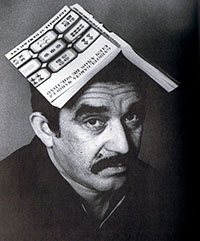
Recipient of the Nobel Prize in Literature. When Márquez was 18, he proposed marriage to a 13-year-old girl (Hart, 2013, p. 28):
I met Mercedes in Sucre, a town just inland from the Caribbean coast, where both our families lived for several years and where she and I spent our holidays. Her father and mine had been friends since they were boys. One day, at a students’ dance, when she was only thirteen I asked her to marry me. Looking back I think the proposal was a metaphorical way of getting around all the fuss and bother you had to go through in those days to get a girlfriend. She must have understood it this way because we saw each other very sporadically, and always very casually, but I think neither of us had any doubt that sooner or later the metaphor would become fact. It actually became fact some ten years after the fiction, without our ever really having been engaged. We were just two people waiting, unhurriedly and imperturbably, for the inevitable.
Márquez said elsewhere that she was nine when he decided to marry her (Martin, 2012, p. 85, 147). His autobiography also suggests that he still had erotic dreams about a childhood experience with a 13-year-old girl (Márquez, 2003):
Her name was Trinidad, she was the daughter of someone who worked in the house, and one fatal spring she began to blossom. She was thirteen but still used the dresses she had worn when she was nine, and they were so tight to her body that she seemed more naked than if she had been undressed. One night we were alone in the courtyard, band music erupted without warning from the house next door, and Trinidad began to dance with me, and she held me so tight she took my breath away. I do not know what became of her, but even today I still wake up in the middle of the night agitated by the upheaval, and I know I could recognize her in the dark by the touch of every inch of her skin and her animal odor.
Romance between adults and youth is a recurrent theme in Márquez’s fiction. One Hundred Years of Solitude‘s Aureliano Buendía courts a seven-year-old girl, and consummates the relationship when she turns nine. In Love in the Time of Cholera, a man in his 70s has a relationship with a 14-year-old girl. Memories of My Melancholy Whores, written when Márquez was 76, is a love story between a 90-year-old man and a 14-year-old prostitute. Of Love and Other Demons is about a priest who falls in love with a 12-year-old dead girl.
Hayao Miyazaki, director (1941 – ) ?
Founder of Studio Ghibli and director of many of Japan’s best known animated films, including Spirited Away and Princess Mononoke. Miyazaki’s protagonists are usually young girls. Miyazaki reportedly once shouted “What’s wrong with falling in love with a 12-year-old girl? “(「一二歳の女の子と恋愛してどこが悪い」) at fellow director Mamoru Oshii when drunk:
Source appears to be the book 「宮崎駿の世界」クリエイターズファイル (バンブームック). Very rough translation:
Those girls are innocent plants for Miya-san. His mind is like a little girl who is standing beyond the mirror. I still don’t get it though. I guess it’s barely different from mine. I have no idea, because I have never been interested in an actual little girl, or child. But he has. When he got terribly drunk, he suddenly shouted “What’s wrong with falling in love with a 12-year-old girl?” That was obviously his true colours.
Various other images are passed around on the Japanese web as evidence of Miyazaki’s tendencies. I cannot verify or translate these myself, but I’ll preserve them here:
- Image 1
- Image 2: Relevant line seems to be “宮崎「ラナの足をつかんでね、さかさまに、こう、その、もう…、パンツも脱がせちゃって…、ウリャウリャとやるとか…”
- Image 3
- Image 4
- Interview (at bottom of page)
Expressed
André Gide, novelist (1869 – 1951)
Author of The Immoralist and recipient of the Nobel Prize in Literature. In his journal, Gide distinguishes between adult-attracted “sodomites” and boy-loving “pederasts”, categorizing himself as the latter (Gide, 1948, p. 246-247):
I call a pederast the man who, as the word indicates, falls in love with young boys. I call a sodomite (“The word is sodomite, sir,” said Verlaine to the judge who asked him if it were true that he was a sodomist) the man whose desire is addressed to mature men. […]
The pederasts, of whom I am one (why cannot I say this quite simply, without your immediately claiming to see a brag in my confession?), are much rarer, and the sodomites much more numerous, than I first thought. […]
That such loves can spring up, that such relationships can be formed, it is not enough for me to say that this is natural; I maintain that it is good; each of the two finds exaltation, protection, a challenge in them; and I wonder whether it is for the youth or the elder man that they are more profitable.
Gide was bisexual, although he preferred boys. His journal approvingly describes the bodies of a 12-year-old boy and young girl (Gide, 1948, p. 334):
Both at Saint-Martin and here I have seen, among the guests of the hotel, none but faces exuding stupidity, egotism, and vulgarity. (Except for a Greek boy of twelve with a marvelous face and body,
wonderfully svelte; but excessively aware of his beauty and, consequently, quite stupid with self-satisfaction.) Yet at the next table to the one where I am writing, and turning her back to me, a girl, barely beyond childhood, with great elegance in her outlines, whom M. would like. I do not tire of looking at her; she notices this and, I believe, is amused by it. But already one can foresee just where her features are going to thicken and become heavy.
In the company of Oscar Wilde, he had several sexual encounters with young boys abroad (Gide, 1935, p. 288):
Wilde took a key out of his pocket and showed me into a tiny apartment of two rooms… The youths followed him, each of them wrapped in a burnous that hid his face. Then the guide left us and Wilde sent me into the further room with little Mohammed and shut himself up in the other with the [other boy]. Every time since then that I have sought after pleasure, it is the memory of that night I have pursued. […]
My joy was unbounded, and I cannot imagine it greater, even if love had been added. How should there have been any question of love? How should I have allowed desire to dispose of my heart? No scruple clouded my pleasure and no remorse followed it. But what name then am I to give the rapture I felt as I clasped in my naked arms that perfect little body, so wild, so ardent, so sombrely lascivious?
For a long time after Mohammed had left me, I remained in a state of passionate jubilation, and though I had already achieved pleasure five times with him, I renewed my ecstasy again and again, and when I got back to my room in the hotel, I prolonged its echoes until morning.
Gide’s novel Corydon, which he considered his most important work, erects a defense of pederasty.
Lord Byron, poet (1788 – 1824)
George Gordon Byron was a romantic poet, described by Goethe as “undoubtedly the greatest genius of our century”. Byron was attracted to both young boys and girls. Cromption (1985) covers his relationships with young boys in detail. Bullough (1990), p. 72 summarizes:
George Gordon Byron [1788-1824], or Lord Byron, was attached to Nicolo Giraud, a young French-Greek lad who had been a model for the painter Lusieri before Byron found him. Byron left him 7,000 pounds in his will. When Byron returned to Italy, he became involved with a number of boys in Venice but eventually settled on Loukas Chalandritsanos, age 15, who was with him when he was killed (Crompton, 1985).
Byron’s To Ianthe is an effusive paean to the beauty of an a 11-year-old girl, with whom he was enamored (MacCarthy, 2014):
Charlotte [Harley], at eleven, was at the age of promise which most moved him, the child on the edge of puberty.
He became temporarily obsessed with Charlotte just as, a few months later, he was fleetingly besotted with his ‘petite cousine’, seven-year-old, black-eyed, black-haired Eliza Byron, plotting to buy toys for her and take her to the theatre. Lady Oxford’s daughter Charlotte is the subject of the famous and much anthologised five stanzas ‘To Ianthe’, fragile flower of the narcissus. He addresses her as his ‘Young Peri of the West!’ In these stanzas, published as a preface to the seventh edition of Childe Harold, Byron celebrates the girl’s evasive charm and addresses the painful ambiguities of their relationship:
‘Oh! let that eye, which, wild as the Gazelle’s,
Now brightly bold or beautifully shy,
Wins as it wanders, dazzles where it dwells,
Glance o’er this page; nor to my verse deny
That smile for which my breast might vainly sigh,
Could I to thee be ever more than friend:
This much, dear maid, accord; nor question why
To one so young my strain I would commend,
But bid me with my wreath one matchless lily
blend.’
Byron arranged for Richard Westall to paint Lady Charlotte’s portrait, suggesting that John Murray, in the new edition, could use an engraving taken from the picture of ‘the pretty little girl’ Murray had seen the other day. In a further act of revenge on Lady Caroline he gave the child as playthings the rings she once gave Byron, including the wedding ring she ordered for herself from a Bond Street jeweller, insisting that Byron should place it on her finger. In reporting this black comedy to Lady Melbourne he confided his tendresse for Lady Charlotte, ‘whom I should love forever if she could always be only eleven years old — & whom I shall probably marry when she is old enough & bad enough to be made into a modern wife’.
At Eywood he acted out the fantasy of educating Charlotte Harley as the future Lady Byron, supplanting her mother as tutor, laughingly imaging himself as poor duped Moody, the middle-aged character in Garrick’s The Country Girl whose designs on his young ward, brought up in rural innocence, misfire when she outwits and abandons him. Byrons concentrated sessions à deux as Lady Charlotte’s tutor evidently went too far. One of Lady Byron’s separation statements reads: ‘He told me that at the time of his connextion with Lady O she detected him one day in an attempt upon her daughter, then a Child of thirteen, & was enraged with him to the greatest degree.’
How seriously should we take this accusation? Lady Byron’s statements, assembled to build up the case against her husband, have a note of hysterical vindictiveness. This particular statement was one of those dictated to Mrs Clermont, her one-time governess and her close ally, whose malevolence towards Byron was not conducive to accuracy. In this statement, for example, Lady Charlotte’s age is given as thirteen when in fact it was eleven. Though there are many signs in Byron’s history of his predilection for young girls there is no evidence of sexual attacks on them. […] Nevertheless, amongst the curious collection of Byron’s trophies and mementoes in the John Murray archive, two small packets contain samples of Lady Charlotte Harley’s nut brown hair.
Byron also fell in love with 12-year-old Teresa Macri, for whom he wrote the poem Maid of Athens (Marchand, 2013, p. 79-80):
There was frequent dancing and much buffoonery at the Macri House, where his increasing interest in the youngest of the “three graces,” Theresa (“12 years old but quite ‘nubila,’” Hobhouse noted), made it possible for him to close the account of the emotional strain of his love for Constance Spencer Smith: “The spell is broke, the charm is flown!” […]
Parting from Theresa gave him a curious pang It may have been on the eve of his departure that he wrote, or at least began, his now famous lines:
Maid of Athens, ere we part,
Give, oh give me back my heart! […]
The line, “By that lip I long to taste,” suggests that his relations with Theresa had been, if not Platonic, at least in the realm of longing rather than of possession.”
Byron considered taking Macri with him, but the mother’s price was too high (Marchand, 1973, p. 46): “I was near bringing away Theresa, but the mother asked 30,000 piastres!”
Muhammad, prophet (c. 570 – 632)
The Sahih al-Bukhari, the most trusted of hadith sources on Muhammad’s life, states: “the Prophet married her [Aisha] when she was six years old and he consummated his marriage when she was nine years old, and then she remained with him for nine years (i.e., till his death).” (Sahih al-Bukhari, 7:62:64). Muhammad and Aisha are said to have shared a great mutual affection.
Edgar Allan Poe, writer (1809 – 1849)
Author and poet credited with inventing the detective fiction genre. Poe married his 13-year-old cousin, Virginia Clemm, at the age of 27. His letter proposing to Virginia was sent two weeks after her 13th birthday, suggesting that he fell in love even earlier. Poe’s proposal letter is almost desperate with passion for his cousin; he writes: “I cannot express in words the fervent devotion I feel towards my dear little cousin — my own darling.” He asks for her consent and promises to respect it either way: “Ask Virginia. Leave it to her. Let me have, under her own hand, a letter, bidding me good bye — forever — and I may die — my heart will break — but I will say no more.” (Quinn, 1941, p. 219-224)By all accounts, Virginia was equally devoted to her husband. Her only surviving composition is a love poem she wrote for Edward in 1846.
Novalis, poet (1772 – 1801)
Novalis was the pen name of Georg Philipp Friedrich Freiherr von Hardenberg, a German poet and philosopher who influenced George MacDonald and Borges, among others. At the age of 22, Novalis fell in love with 12-year-old Sophie von Kühn. Novalis’s friend Ludwig Tieck described his immediate captivation with her (Carlyle, 1829) :
It was not very long after his arrival at Arnstadt, when in a country mansion of the neighbourhood, he became acquainted with Sophie von K—. The first glance of this fair and wonderfully lovely form was decisive for his whole life; nay we may say that the feeling, which now penetrated and inspired him, was the substance and essence of his whole life. Sometimes, in the look and figure of a child, there will stamp itself an expression, which, as it is too angelic and ethereally beautiful, we are forced to call unearthly or celestial; and commonly at sight of such purified and almost transparent faces there comes on us a fear that they are too tender and delicately fashioned for this life; that it is Death, or Immortality, which looks forth so expressively on us from these glancing eyes; and too often a quick decay converts our mournful foreboding into certainty. Still more affecting are such figures, when their first period is happily passed over, and they come before us blooming on the eve of maidhood. All persons that have known this wondrous loved one of our Friend, agree in testifying that no description can express in what grace and celestial harmony the fair being moved, what beauty shone in her, what softness and majesty encircled her. Novalis became a poet every time he chanced to speak of it. She had concluded her thirteenth year when he first saw her: the spring and summer of 1795 were the blooming time of his life; every hour that he could spare from business he spent in Grüningen; and in the fall of that same year, he obtained the wished-for promise from Sophie’s parents.
They were engaged on Sophie’s 13th birthday. When Sophie died at the age of 15, Novalis was shattered: “For three years she has been my hourly thought. She alone bound me to life, to the country, to my occupations. With her I am parted from all; for now I scarcely have myself any more.” (Carlyle, 1829)
Srinivasa Ramanujan, mathematician (1887 – 1920)
Mathematical autodidact who made numerous contributions across several fields. Ramanujan married a nine-year-old girl (Bullough, 1990, p. 71):
The third historical figure is the great Indian mathematical genius, Srinivasa Ramanujan, who was born in 1887 and died some 32 years later. At age 22, he married 9-year-old Srimathia Janki, who brought her mother with her when she moved into his household (Kolata, 1987).
Mahatma Gandhi, activist (1869 – 1948)
Bullough (1990), p. 71 recounts Gandhi’s practice of sleeping naked with young girls:
Though he took a vow of sexual abstinence at 37, a vow that he found difficult to observe and that he once described as “walking on the sword’s edge,” this vow did not stop him from later fondling girls, both pubescent and prepubescent. In his later years, Gandhi took to taking such girls to bed with him to overcome his “shivering fits” in the night. His female companions, who came from his inner circle-all certified virgins or young brides-entered his bed naked in order to warm him with their bodies. Some of them also administered enemas to him. Among the young girls, there was rivalry as to who would sleep with him, and one of his girl disciples reported that his bed companions had a difficult time in restraining themselves and repressing their sexual impulses since he often rubbed against them and touched them (Bullough, 1981). Though his disciples were fearful of public reaction if news of these “pedophilic sexual” interactions was publicized, Gandhi continued to engage in them until his death. Here, there was no sexual intercourse, and most girls were postpubertal, but some were younger. In modern Western society, such activity would be a criminal offense.
Daniel Carleton Gajdusek, scientist
Awarded the Nobel Prize in Physiology or Medicine for his groundbreaking research on the first known prion disease, Gajdusek was an undisputed genius who also did important work on measles, polio and malaria, and discovered many previously unknown tribes and languages. He was convicted of oral sex with a teenage boy in 1997 after stating in a recorded phone call that he was a pedophile (Maugh, 2008). Bosse Lindquist’s documentary The Genius and the Boys covers Gajdusek’s sexual attraction and contact with prepubescent boys. Some of the boys felt hurt, while others did not (01:17:21):
During the making of the film, seven men testified in confidentiality about Gajdusek having had sex with them when they were boys. Four say that the sex was untroubling and that they still love Gajdusek. For three of them, the sex was shaming, abusive and a violation. Many of Gajdusek’s foster children approached during the making of the film said they had no sexual contact with him.
A negative account from one victim begins at 01:03:54. Gajdusek defends his actions at 01:05:18:
Gajdusek: I have never once taken a kid to my bed. They have come to my bed, and I know when to kick them out. If they hug me and I find them playing with my cock, I say, good on you, I play with theirs. And I’ll do it now and with great pleasure.
Interviewer: When you grow up with a culture that does not condone this, that–
Gajdusek: No culture condones it.
Interviewer: –surely it must hurt you, when you get subjected to a grown-up forcing sexuality on you.
Gajdusek: Boy, what a brainwashed person you are. With three or four hundred boys, who’ve had sex with me from 8 and 10 and 12, 100% have run into my bed, jumped in without my mentioning it, and asked for sex. I have never asked for it, I’ve never– and most of my friends, don’t you realize that I was jumping in people’s beds hoping they would take me. All boys want a lover, my god.
Gajdusek discusses his own sexual experience as a child at 01:08:28, and defends incest with children at 01:14:46. Gajdusek’s journal discusses his attraction (00:52:04):
Gajdusek writes: “The society in which I live denies me the right to exercise my love, even in sublimated form, if I’m honest enough to admit the force behind the sublimation.”
Gajdusek adopted and mentored many boys and at least one girl throughout his life; positive accounts of his influence in this respect are given throughout the film (00:10:45, 00:11:14, 00:32:50, 00:51:22).
Will Durant, historian (1885 – 1981)
Prolific American writer on history and philosophy. Durant met his future wife when she was 14 (Bullough, 1990, p. 71-72):
Durant’s future wife, Ariel, had just turned 14 when she entered his classroom in the fall of 1912, and she immediately fell in love with him and set plans to marry him. By March of 1913, he had resigned his position because of his growing interest in her, and they were married October 31, 1913; she was just past 15 and he 28 (Durant and Durant, 1977).
Johann Wolfgang von Goethe, author (1749 – 1832)?
Writer best known for the play Faust. Bullough (1990), p. 72 lists Goethe as a historical example of minor attraction:
It was not only girls who were involved in such relationships but boys, as well. Johann Wolfgang von Goethe wrote of both boys and girls: “I like boys a lot, but the girls are even nicer. If I tire of her as a girl, she’ll play the boy for me as well” (Goethe, 1884).
Goethe defended pederasty (Goethe, 1950, p. 686; English translation from Howard’s Corydon):
Pederasty is as old as humanity itself, and one can therefore say that it is natural, that it resides in nature, even if it proceeds against nature. What culture has won from nature will not be surrendered or given up at any price. (Die Knabenliebe sei so alt wie die Menschheit, und man könne daher sagen, sie liege in der Natur, ob sie gleich gegen die Natur sei. Was die Kultur der Natur abgewonnen habe, werde man nicht wieder fahren lassen; es um keinen Preis aufgeben.)
M. P. Shiel, author (1865 – 1947)
Author of The Purple Cloud, and one of H.P. Lovecraft’s favorite writers, Shiel was convicted of sex with a 12-year-old girl (MacLeod, 2008). He wrote a letter admitting and defending his actions to his publisher (MacLeod, 2008, p. 358):
I have written letter after letter to the Home Secretary, protesting that my innocence is as snow—supposing, I mean, that I had done all that I am charged with, though it does not even chance to be true that I did just what I was “convicted” of, viz. “carnal knowledge”19—whether knowledge imparted or received I don’t know—were there ever such ponderous people? making mountains out of molehills and crimes out of love-toyings?—the lady in question being—not two days or months—but two years past her puberty, older [^thus] than was Napoleon’s mother when her first-born was born, and Napoleon’s mother was not a Hindoo, as this girl is, but an Italian; nor is was this girl much younger than Warren Hastings’ mother when he was born, Hastings’ mother not being a Hindoo, but an English girl; so that the fathers of those really strong-minded men would have got longer “sentences” for getting them, under the Stead and Booth régime, than I have got: and, of course, as I have been trying to cry out in my weak voice for years, the twentieth century rejects a country whose laws are the outcome of the sudden emotions and enthusiasms of such [raw meal?], since France and Germany are not going to keep company with her.
His taste sometimes leaked into his fiction (MacLeod, 2008, p. 368-370):
At the same time, Shiel’s heroines are often characterized as knowing their mind about their lovers at a young age. Ada of Say au R’voir but Not Goodbye, for example, has loved her older intended since she was twelve, but perhaps the most notable instance of this emotional maturity is represented in Jesse of How the Old Woman Got Home. This novel, in which Metchnikoff’s theory about child-mothers is boldly defended, also daringly characterizes the relationship of its romantic leads—the thirty-year-old Hazlitt and the seventeen-year-old Jesse, who have been sexually active before marriage. Jesse, we are told, has been in love with Hazlitt since she was seven and he with her since he was twenty-three and she ten. […]
In one novel, however, the Biblically themed This Above All (1933; 1943 as Above All Else), Shiel dares to eroticize a much younger girl. Set in contemporary Paris, the novel draws on the resurrection stories of the [twelve-year-old] daughter of Jarius (as told in Mark 5:22–43; Luke 8:41–56; and Matthew 9:18) and Lazarus (from John 11:1–44). In the novel, the heroine Rachel is Jarius’s daughter seeking union with Lazarus (called Surazal), her soul mate. Though nearly two thousand years old, Rachel and Surazal have maintained, in physical terms, the age at which they were resurrected. Rachel, part “child,” part “harlot,” part “saint,” as A. Reynolds Morse has characterized her, is highly sexualized, inspiring lust and devotion in men with her strange beauty and provocative dancing. Her youthful looks, however, pose a danger, even to the immortal Lazarus and he is warned that he is not immune to the earthly punishments that await those who get involved with underage girls: “If Rachel and you co-habit without some marriage-rite, you may see yourself in prison here in Europe, since it cannot be believed that she is as old as fourteen.”
Horatio Alger, author (1832 – 1899)
Author of influential boys’ fiction in the 19th century. Alger was expelled from the Unitarian ministry for pederasty, as discussed in Hoyt (1974).
Samuel de Champlain, explorer (1574 – 1635)
Explorer who mapped the coast of Canada and established the settlements of New France and Quebec City. At the age of about 36, Champlain married a 12-year-old girl. The contract stated that he could not have sex with her until her 14th birthday, but according to Bullough (2002), p. 481, he sought permission from her parents to consummate the marriage before that:
Many of those who entered into such relationships, such as Samuel de Champlain (d. 1635), the first governor of French Canada, agreed that they would not have sex with a 12-year-old bride until she was 14, as Champlain did unless he consulted with her family and received their permission to do so earlier. Apparently, he did.
Their marriage was initially unhappy.
John, King of England, monarch (1166 – 1216)
Married 12-year-old Isabella of Angoulême at the age of 33. Some scholars speculate it was a political move without evidence, but contemporary chroniclers claimed that John had a “mad infatuation” with the blond, blue-eyed Isabella, and married her despite his best political interests (Turner, 2011, p. 98). Powicke (1999, p. 141-142) states that political explanations are superfluous in light of John’s character.
Rabindranath Tagore, poet (1861 – 1941)
Bengali writer who received the Nobel Prize in Literature. 21-year-old Tagore married approximately 10-year-old Mrinalini Devi in 1883. The marriage was arranged by his father and he had not met her beforehand (Dutta & Robinson, 1997, p. 13), but they produced their first child, Madhurilata (Bela), in 1886, when Mrinalini was 13 or 14. (Dutta & Robinson, 1997, p. 7)
Giacomo Casanova, adventurer (1725 – 1798)
Casanova is now known as the archetypal womanizer because of the many sexual exploits recorded in his memoirs. Some of these acts involved girls as young as nine (Wolff, 2005, p. 433-434):
In Ancona in 1744 Casanova encountered a traveling theatrical family that included the supposed castrato singer Bellino, who turned out to be a girl in disguise, and became a major romance. Bellino, however, also had two younger sisters, Cecilia age twelve, and Marina age eleven, who both briefly occupied Casanova’s bed. “The two little girls were true living rose buds,” Casanova observed, “and very worthy of being preferred to Bellino, if I had not gotten into my head the idea that Bellino was a girl like them. Despite their extreme youth (grande jeunesse) one saw the signs of their precocious puberty (puberte precoce) on their white bosoms” (II, 4). For these children Casanova had a vocabulary of description that evocatively expressed their barely pubescent appeal. First he had sex with twelve-year-old Cecilia, and then he was approached by eleven-year-old Marina. He hesitated for a moment in response to her juvenile advances:
“You are too much a child. (Tu es trop enfant.)”
“Age means nothing. I am better formed than my sister.”
“And is it also possible that you have had a lover?”
“As for that, no.”
“Very well. We will see tonight.” (II, 8)
[…]
Casanova too considered such encounters to be providential, and summed them up accordingly: “Those who say that life is only a collection of misfortunes mean that life itself is a misfortune …. These people have written thus without good health, without a purse full of gold, and without the contentment of the soul that comes from holding in their arms the like of Cecilia and Marina, and being confident of having others of that sort in the future” (II, 11-12). […]
In 1755, when he was thirty, Casanova had sex with thirteen-year-old Helene in Paris, but stopped short of intercourse, because he hesitated over the price: “little Helene, whom I enjoyed, while leaving her intact.” In 1765, when he was forty, he purchased a thirteen-year-old girl in St. Petersburg as a sexual slave, and therefore did not need to deny himself any of her favors. In the memoirs he described the Russian girl as emphatically prepubescent: “Her breasts had still not finished budding. She was in her thirteenth year. She had nowhere the definitive mark of puberty.” (III, 196-7; X, 116-17). In 1774, when he was almost fifty, Casanova encountered in Trieste a former lover, the actress Irene, now accompanied by her nine-year-old daughter. “A few days later she came, with her daughter, who pleased me (qui me plut) and who did not reject my caresses. One fine day, she met with Baron Pittoni, who loved little girls as much as I did (aimant autant que moi les petites filles), and took a liking to Irene’s girl, and asked the mother to do him the same honor some time that she had done to me. I encouraged her to receive the offer, and the baron fell in love. This was lucky for Irene” (XII, 238).
And here are some scraps of history that do not merit their own entry:
- Jean-Jacques Rousseau: Rousseau and a friend purchased a little girl of eleven or twelve years, Anzoletta, with the intention of deflowering her when she became nubile (In Rousseau’s translated words, they “were obliged to wait until she became of a riper age”). However, in the mean time he became paternally attached to her and repelled at the idea of any sexual contact (Rousseau, 1903). He would later invent the modern day concept of childhood innocence. Wolff (2005, p. 437) writes: “Indeed, one might conclude that it was partly the erotic contemplation of little Anzoletta in Venice in the 1740s that permitted Rousseau to achieve some of his insights about the innocence of childhood.”
- Jim Morrison: “In suburban Hawthorne, an already tripping Jimmy saw a beautiful girl on the sidewalk and jumped out of the car to kiss her. A cop car pulled. The girl turned out to be only fourteen. [p. 95] […] The band was evicted from their motel when Jim was caught sneaking a (very) underage girl out his room, where she had spent the night giving Jim a leisurely bath, in which he fell asleep. [p. 170]” (Davis, 2005)
References
- Adair G. (2003). The Real Tadzio: Thomas Mann’s Death in Venice and the Boy who Inspired it. Carroll & Graf.
- Barrie J.M. (1902). The Little White Bird; or, Adventures in Kensington gardens.
- Birkin A. (1979). Barrie and the Lost Boys: The love story that gave birth to “Peter Pan”. New York: Clarkson N. Potter.
- Birkin A., Goode S. (2003). J.M. Barrie & the Lost Boys. Yale University Press.
- Bridcut J. (2011). Britten’s Children. Faber & Faber.
- Bullough V.L. (1983). “Lewis Carroll,” Medical Aspects of Human Sexuality. 17: 134-140.
- Bullough V.L. (1990). “History in adult human sexual behavior with children and adolescents in Western societies”, in Pedophilia: Biosocial Dimensions (Jay R. Feierman, ed.). New York: Springer-Verlag Publishers.
- Bullough V.L. (2002). “Peer Commentaries on Green (2002) and Schmidt (2002): Pedophilia and Sexual Harassment: Do They Have Similarities?”, Archives of Sexual Behavior, 31 (6): 479–503
- Burd V. A. (2007). “Ruskin on His Sexuality: A Lost Source,” Philological Quarterly, 86 (4): 433.
- Carlyle T. (1829). “Novalis,” The Foreign Review, 4.7: 97-141.
- Cohen M.N. (1979). The Letters of Lewis Carroll. 2 volumes. New York: Oxford University.
- Cohen M.N. (1996). Lewis Carroll: A Biography. Vintage.
- Cooley J. (2009). Mark Twain’s Aquarium: The Samuel Clemens-Angelfish Correspondence, 1905-1910. University of Georgia Press.
- Crompton L. (1985). Byron and Greek Love: Homophobia in 19th Century England. University of California Press.
- Davis S. (2005). Jim Morrison: Life, Death, Legend. Gotham.
- Dick K. (1954). “The Case of Lewis Carroll“, The Spectator, 10 December, p. 29.
- Dutta K., Robinson A. (1997). Selected Letters of Rabindranath Tagore. Cambridge University Press.
- Engen R. K. (1981). Kate Greenaway, a biography. Schocken Books.
- Gide A. (1948). O’Brien J., translator. The Journals Of André Gide, Vol II 1914-1927. Alfred A.Knopf.
- Gide A. (1935). Bussy D., translator. If It Die: An Autobiography. New York: Random House.
- Goethe J.W. (1950). Gedenkausgabe der Werke, Briefe und Gespräche, 28. August 1919, Volume 23. Artemis-Verla.
- Hart S. M. (2013). Gabriel García Márquez. Reaktion Books.
- Hill H. (2010). Mark Twain: God’s Fool. University of Chicago Press.
- Hilton T. (2002). John Ruskin. Yale University Press.
- Hoyt E.P. (1974). Horatio’s boys: The life and works of Horatio Alger, Jr.. Chilton Books.
- Kincaid J.R. (1994). Child-Loving: The Erotic Child and Victorian Culture. Routledge.
- Kurzke H. (2002). Thomas Mann: Life as a Work of Art : a Biography. Princeton University Press.
- MacCarthy F. (2014). Byron: Life and Legend. Hodder & Stoughton.
- MacLeod K. (2008). “M. P. Shiel and the Love of Pubescent Girls: The Other ‘Love That Dare Not Speak Its Name’”, English Literature in Transition, 1880-1920, 51 (4): 355-380.
- Mann K. (1975). Katia Mann: Unwritten Memories. Knopf.
- Marchand L., ed. (1973). “Famous in My Time”: 1810-1812. Harvard University Press.
- Marchand L. (2013). Byron: A Portrait. Random House.
- Márquez G.G. (2003). Grossman E., translator. Living to Tell the Tale. Vintage International.
- Martin G. (2012). Gabriel Garcia Marquez: A Life. A&C Black.
- Maugh II T. (2008). “D. Carleton Gajdusek dies at 85; Nobel Prize winner identified exotic disease, was unrepentant pedophile“, Los Angeles Times, December 18.
- Mavor C. (1996). Pleasures Taken: Performances of Sexuality and Loss in Victorian Photographs. I.B.Tauris.
- Mitchell D., Reed P. (2011). Letters from a Life Volume 3 (1946-1951): The Selected Letters of Benjamin Britten. Faber & Faber.
- Money J. (1990). “Pedophilia: A Specific Instance of New Phylism Theory as Applied to Paraphilic Lovemaps”, in Pedophilia: Biosocial Dimensions (Jay R. Feierman, ed.). New York: Springer-Verlag Publishers.
- Pilkington J.G., translator (1876). The Confessions of St. Augustine. Edinburgh: T. & T. Clark.
- Powers R. (2010). “Mark Twain in Love,” Smithsonian Magazine, May. Accessed 2015-01-30.
- Powicke M. (1999). The Loss of Normandy: 1189 – 1204. Manchester University Press.
- Quinn A.H. (1941). Edgar Allan Poe: A Critical Biography. D. Appleton-Century Company.
- Sahih al-Bukhari, Volume 7, Book 62, Number 64. Translation by Muhammad Muhsin Khan.
- Rousseau J. J. (1903). The Confessions of Jean Jacques Rousseau. Privately Printed for the Members of the Aldus Society.
- Ruskin J. (1907). Praeterita, Vol. III. London: George Allen.
- Ruskin J. (1911). The crown of wild olive, and The cestus of Aglaia. London: J. M. Dent & Sons.
- Ruskin J. (2012). Praeterita. Oxford University Press.
- Shatz A. (2014). “At the Crime Scene,” London Review of Books, 36 (15): 21-26.
- Turner R. (2011). King John: England’s Evil King. The History Press.
- Wakeling E., ed. (1997). Lewis Carroll’s Diaries, vol. 4. Bedfordshire: Lewis Carroll Society.
- Warner S. (1967). T.H. White: A Biography. London: Jonathan Cape/Chatto and Windus.
- Wolff L. (2005). “‘Depraved inclinations’: Libertines and children in Casanova’s Venice,” Eighteenth-Century Studies, 38 (3): 417-440.
